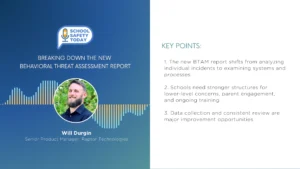Why Colleges and Universities Need to Overhaul Their Strategy in 2020
After nearly 200 years in existence, Green Mountain College in western Vermont is no more. The same goes for Southern Vermont College, the College of St. Joseph and Atlantic Union College. All of them, gone.
The fact that some smaller colleges come and go should surprise nobody. Change is inevitable in any industry, and higher education is no exception. But I believe there are more fundamental issues at play with these recent closures.
“My personal belief is that higher education will mimic the trend of community hospitals as we witnessed in the 1990s.”
As we look toward 2020, we are hearing that many traditional colleges and universities — unable to adjust to technological and other socioeconomic changes — will essentially go out of business. In September 2019, Michael Horn, an education scholar at Harvard University, said he believes at least 25 percent of institutions of higher learning will close or merge in the next two decades. And for several years, Harvard Business School Professor Clayton Christensen has predicted that half of colleges and universities could face bankruptcy within 10 to 15 years.
My personal belief is that higher education will mimic the trend of community hospitals as we witnessed in the 1990s. Community hospitals were a staple of most areas, but today between mergers and bankruptcies, that landscape has truly changed. To borrow a quotation from Lee Iacocca’s desk, higher education institutions will either:
- Lead – Innovate and continue to grow their student bases, ultimately acquiring weaker institutions
- Follow – Less innovative institutions will be acquired for some identified strategic value or geographic location
- Get Out of the Way – These institutions will struggle to maintain the status quo, often calling upon the need to innovate way too late to help them survive. These are the institutions likely to close or, at best, struggle to get by on life support
Transformation Required
This isn’t the first time an industry-wide transformation has been the only option for survival. Hospital systems have had to answer the same mandate: To endure, find new synergies between costs and consumer demands. Going one step beyond Horn and Christensen, I would argue that institutions of higher learning that do not completely reexamine their educational approach by next year are unlikely to outlast the next decade.
Why 2020? Because time is running out for many schools. College enrollment decreased for the eighth consecutive year this past spring, according to National Student Clearinghouse Research Center estimates. Many believe this has to do with a marked drop in the U.S. birthrate after the Great Recession. Then there are students shunning the astronomic tuitions of traditional colleges in favor of rising online education options.
But there’s another set of issues to consider here — all of them technology related. Simply put, higher education isn’t doing enough in three areas students care about: relevancy of curricula, on-demand options and self-healing technology. But by adopting the often-cited “lead, follow or get out of the way” mentality, these institutions can evolve for the better.
Relevant Curricula
It might sound like educational blasphemy, but a college degree is a product. It’s a product that demands more flexibility and relevance in this age.
We understand from studies that young people change jobs like actors change costumes. In fact, it’s been said the average person changes careers five to seven times during their working life. The education they get in college isn’t always — if ever — directly applicable to what they’ll do in their professional lives.
Going forward, curriculum needs to be more applicable beyond the classroom. Every professor, after delivering their most scintillating lectures, has experienced students coming up to the podium to ask, “Is this going to be on the test?” Institutions shouldn’t be ignoring this meaningful question because it’s all about relevance. What they’re really asking is, “How is the material presented in the classroom going to affect me, both on the day I take my exam and later in life?”
Even the technology institutions choose to deploy in classrooms has to be relevant to the learner. Merely replacing an analog educational activity with its digital counterpart isn’t going to move the needle on learning. You’ve got to know what it is you’re trying to achieve educationally, and then select technologies that will boost your odds of success.
On-Demand Options
Most college students today have grown up with digital technology. When they shop online, they’re used to finding answers to questions with a few clicks of their mouse. If they have a problem, there’s almost always a chatbot to help them. When they need to get somewhere, they open an app and have a car waiting for them in mere minutes.
Oddly enough, though, most institutions of higher learning haven’t quite gotten the message that immediate access to information is important to students. It’s one of the reasons many of them are choosing online education over brick-and-mortar schools. And it’s a key factor as to why higher education, in general, is struggling.
If a student is married or has a job, as many do, going to a lecture hall to hear professors deliver the same old material isn’t always the best use of their time. Online and blended learning curricula are growing, with nearly nine in 10 faculty members saying they teach fully online or blended courses, according to a Campus Technology survey. Students today benefit greatly from having that fresh content streamed, recorded and downloadable — on demand — so it can be ready whenever it’s needed. This kind of virtual instruction could have an important role in future learning.
Affordability
Generation Z students are taking a fresh perspective on their education “investment” unlike millennials. Seeing their older counterparts struggling with massive student loan debts, today’s graduates are having to postpone investing in their own retirements and home ownership as too much of their earnings must go to fulfilling loan repayments.
The age of ever-increasing tuition rates pose a challenge for today’s institutions. Even when a student is presented with an EFC – expected family contribution – of $5,000, some schools with total annual costs exceeding $65,000 are expecting the family and student to incur over $40,000 annually in loans. That amounts to over $160,000 in loan debt for a bachelor’s degree, more than four times the current average student loan debt.
Efforts to make college more affordable, such as New York State’s Excelsior Scholarship is making higher education more affordable to middle class families. Online alternatives are substantially lowering the cost for a baccalaureate education, such as a new partnership between 2U and the London School of Economics, where tuition for the program is approximately $25,000 USD.
Schools cannot continue to raise tuition and assume students will not critically evaluate the cost-benefit analysis of your institution.
Colleges and universities have a problem, whether they recognize it or not. The digital world is threatening to pass them by.
A “reboot” starts by evaluating where they stand, putting research and development teams in place to plan for the future and investing in the tools, curricula and technologies to help them achieve their goals. Institutions that take action in the next year stand a chance of not only surviving but redefining the role of education in modern times. Those that don’t will reflect on these years as “the good ol’ days.”
This post was originally published on LinkedIn by Elliott Levine. Elliott Levine is Director of Education for the Americas Region of HP, Inc. and the company’s first Distinguished Technologist focused solely on edtech. He drives strategy and go-to market tactics for HP’s $1B+ education sales in the U.S. and Canada. He is a sought-after global speaker to discuss the future of, and innovation to, the learning paradigm. He has, and is developing products focused on personalized learning and virtual instruction, some of which are patent-pending. Prior to joining HP in 2008, Elliott held leadership positions in a number of successful startups and turn-around education companies in senior management, product development, marketing and strategic planning roles.








